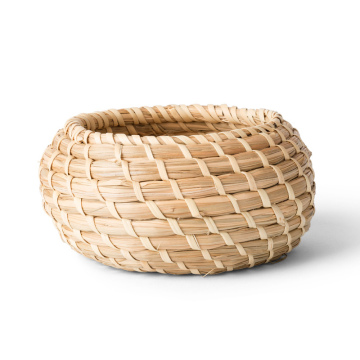The Ultimate Ramen Tour in Japan: A Culinary Journey
Introduction to Ramen Variations in Japan
Ramen, a beloved Japanese noodle dish, encapsulates the culinary diversity and regional nuances of Japan. This iconic dish comes in various styles, each boasting a distinct broth base and flavor profile that reflects the traditions and local ingredients of the area where it originates. The primary types of ramen include Shoyu, Miso, Shio, and Tonkotsu, each offering a unique taste experience.
Shoyu ramen, with its soy sauce-based broth, is characterized by a rich, umami flavor and typically features a clear, brownish hue. This style predominantly comes from the Kanto region, particularly Tokyo. Meanwhile, Miso ramen, a hearty concoction made with fermented soybean paste, hails from Hokkaido, where the colder climate calls for a more robust and warming bowl of noodles. This variation tends to be thicker and offers a slightly sweet and savory taste profile.
Shio ramen, recognized for its light and clear broth often derived from sea salt, is somewhat more delicate in flavor. This style is likely tied to the coastal regions of Japan, such as Fukuoka, where the use of seafood and fresh ingredients complements its refreshing nature. On the other hand, Tonkotsu ramen features a rich, creamy broth made from pork bones that's simmered for hours, resulting in a decadent and hearty offering typical of Kyushu. This variation has gained substantial popularity in recent years, influencing ramen shops worldwide.
Ramen's significance transcends mere nourishment; it illustrates Japan's intricate culinary traditions and regional pride. Over the years, ramen has evolved, incorporating international influences while maintaining its essence. In exploring these different variations, one appreciates not just the flavors but also the stories and history behind each bowl of ramen, highlighting its prominence in Japanese culture.
Must-Visit Ramen Shops Across Japan
Japan boasts a rich tapestry of ramen shops, each offering their distinctive twist on this beloved dish. One of the most renowned locations is Ichiran Ramen in Tokyo. Famous for its tonkotsu ramen, Ichiran provides a unique dining experience. Patrons enjoy their bowls in private booths, allowing them to focus solely on the rich, creamy broth that has been simmered for hours. The restaurant’s dedication to flavor means that customers can customize their bowls, from spice levels to noodle firmness, creating a truly personalized meal.
Traveling north to Sapporo, the birthplace of miso ramen, Sumire stands out as an iconic establishment. The restaurant serves a hearty bowl of miso ramen, enriched with methods passed down through generations. Diners are greeted by the comforting aroma of miso as they enter, and the combination of thick noodles, savory broth, and tender vegetables creates a deeply satisfying meal. Customers frequently remark on how the atmosphere feels warm and inviting, perfect for those cold Hokkaido winters.
Meanwhile, in Osaka, Hanamaruken Ramen captivates visitors with its signature dish: hokkaido-style ramen topped with slow-cooked pork belly. Hanamaruken’s dedication to high-quality ingredients is notable, as they source local and seasonal products to ensure freshness. The charming décor and staff's welcoming demeanor further enhance the dining experience, making it a favorite among locals and tourists alike.
Lastly, in Fukuoka, Hakata Issou serves a quintessential bowl of hakata ramen. Known for its ultra-thin noodles and rich pork bone broth, this shop emphasizes traditional techniques that have been perfected over the years. The open kitchen allows diners to witness the chef's expertise firsthand, infusing an element of theatricality into the meal. Regular patrons often share their love for the ramen's perfect balance of flavors, making it a must-visit for any ramen enthusiast.
Ramen Tour Itinerary: Planning Your Journey
Embarking on an ultimate ramen tour across Japan requires careful planning to make the most of this culinary experience. Your itinerary should include key destinations known for their distinct ramen styles and popular shops, which vary significantly across regions. Starting in Hokkaido, Sapporo is renowned for its miso ramen, particularly in winter when a steaming bowl becomes an ideal comfort food. The best time to visit is early afternoon, as popular shops can become crowded later in the day.
Next, consider traveling south to Tokyo, where you can sample an array of ramen types, from shoyu (soy sauce) to tonkotsu (pork bone broth). Shinjuku is a vibrant area filled with ramen shops. A well-timed visit during lunch hours would be preferable for experiencing the local crowd and energy. You may want to spend a couple of days exploring Tokyo’s ramen scene, as there's no shortage of flavors and local specialties.
When planning transport between cities, the shinkansen (bullet train) offers a swift and efficient means of travel. Investing in a Japan Rail Pass can significantly reduce transportation costs, allowing you to hop between cities seamlessly. Keep in mind that some ramen shops offer tasting pairings with side dishes like gyoza or specific drinks. It is advisable to research and consider these combinations to enhance your tasting experience. Furthermore, familiarize yourself with dining etiquette—be sure to respect local customs by saying "itadakimasu" before your meal and "gochisousama deshita" after finishing your bowl, which expresses gratitude.
As you craft your itinerary, remember to remain flexible; engaging with locals and discovering hidden gems can lead to unexpectedly delightful culinary experiences. By mapping out your journey with well-timed visits and a keen appreciation for local culture, your ramen tour can evolve into an unforgettable adventure through the rich tapestry of Japanese cuisine.
Culinary Tips: Making Ramen at Home
Creating authentic ramen at home can seem daunting, but with the right ingredients, equipment, and techniques, it becomes a rewarding experience. To embark on this culinary journey, consider starting with the essential ingredients that form the foundation of delicious ramen. High-quality ramen noodles are paramount; these can be found fresh or dried at Asian grocery stores. For the broth, a rich and flavorful base usually consists of pork, chicken, or a vegetarian alternative. Simmering these proteins with aromatics like garlic, onions, and ginger will yield a depth of flavor that is characteristic of traditional ramen.
In addition to the broth, it's important to prepare a few key toppings such as sliced chashu (braised pork), marinated soft-boiled eggs, green onions, and nori (seaweed). Each topping contributes to the overall texture and flavor, allowing for a truly tailored experience. Don't shy away from experimenting with different ingredients; for instance, you can substitute miso, soy sauce, or shio (salt) for varied styles of ramen, such as tonkotsu, shoyu, or miso ramen.
When it comes to equipment, investing in a good pot for broth-making and a sturdy cutting board can elevate your preparation. If you plan to make fresh noodles from scratch, a pasta maker could be a worthy addition. However, store-bought noodles are perfectly acceptable and can save time. The cooking process itself should not be rushed; allow the broth to develop over low heat and taste as you go, adjusting seasoning to your preference.
Finally, embrace the creative aspect of ramen preparation. Taste testing while incorporating different flavors and techniques will help you craft a bowl that reflects your unique palate. Whether you prefer a smooth, creamy broth or a light, clear one, the key is experimentation. Making ramen at home is not merely a replication of what you experienced during your tour in Japan but a chance to infuse your personal culinary style into each bowl.











